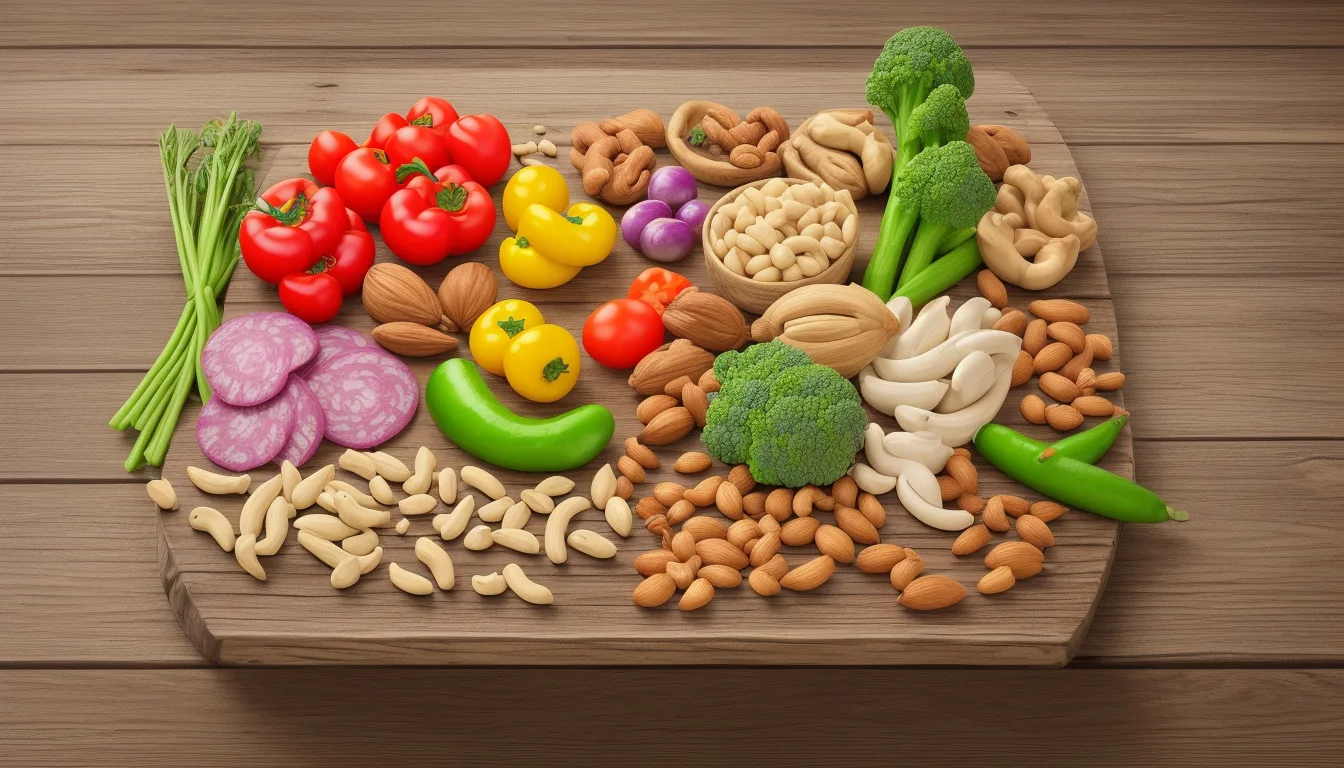
When I first stumbled upon the concept of glycemic index (GI), I was intrigued by its potential to transform not just my eating habits but my overall health. The GI is a valuable tool that can help us navigate the often confusing landscape of nutrition.
With its ability to indicate how different foods impact our blood sugar levels, understanding the glycemic index can lead to better food choices, weight management, and enhanced well-being.
In this guide, I will share the secrets of GI, exploring its definition, its effects on our bodies, and how we can leverage it for healthier eating.
The TL;DR
- The glycemic index (GI) measures how carbohydrate-containing foods affect blood sugar levels.
- Choosing foods with a low GI can help regulate blood sugar and support weight management.
- Foods are classified into low, medium, and high GI categories affecting their impact on energy and appetite.
- Incorporating low GI foods can offer health benefits such as improved satiety and reduced cravings.
- Meal planning with the glycemic index in mind promotes a balanced diet and overall well-being.
Is it possible THIS is the BEST Fat Burner? Read our review here.

Understanding Glycemic Index: Definition and Purpose
When I first started my journey into healthy eating, I stumbled upon the concept of the glycemic index (GI), and it completely transformed the way I viewed carbohydrates. Here’s what I learned:
- The glycemic index is a ranking system that classifies foods based on how quickly they raise blood glucose levels after consumption.
- Foods with a high GI, such as white bread and sugary snacks, lead to rapid spikes in blood sugar, while those with a low GI, like whole grains and legumes, cause a more gradual increase.
- Understanding the glycemic index is essential for anyone looking to manage their weight, improve their energy levels, or even regulate blood sugar for diabetes management.
By choosing foods with a low glycemic index, I’ve been able to maintain steady energy throughout the day, avoid the dreaded sugar crashes, and make better dietary choices that support my overall health.
How This Index Affects Blood Sugar Levels
As someone who has always been conscious about my dietary choices, I’ve delved into the fascinating world of the glycemic index (GI) and its impact on blood sugar levels.
Understanding the glycemic index is crucial, especially for those of us managing conditions like diabetes or even for those simply looking to maintain energy levels throughout the day. The glycemic index measures how quickly carbohydrates in food raise blood sugar levels compared to pure glucose, which has a GI of 100.
Foods with a high glycemic index, such as white bread and sugary drinks, can cause a rapid spike in blood sugar, while low GI foods like whole grains and legumes promote a slower, more controlled release of energy.
This is particularly important for balancing energy and preventing crashes, which I’ve experienced firsthand when consuming high GI snacks. By making informed choices based on the glycemic index, I’ve been able to better manage my blood sugar levels and overall wellbeing.
‘Let food be thy medicine and medicine be thy food.’ – Hippocrates
Is it possible THIS is the BEST Fat Burner? Read our review here.
Benefits of Choosing A Low Glycemic Index Foods
When it comes to making informed choices about my diet, I’ve found that understanding the concept of the glycemic index (GI) has been a game-changer. Choosing low glycemic index foods can lead to numerous benefits that have positively impacted my health and wellbeing. One of the standout advantages is the stabilization of blood sugar levels.
Low GI foods, like whole grains, legumes, and most fruits, release glucose slowly into the bloodstream, which helps to prevent the spikes and crashes in energy that can come from dining on higher-GI options, such as white bread or sugary snacks. This steady release of energy not only keeps my insulin levels balanced but also helps me manage my hunger more effectively, reducing those pesky cravings throughout the day.
Additionally, incorporating low glycemic index foods into my meals has been linked to a reduced risk of chronic conditions such as Type 2 diabetes and heart disease. By prioritizing these healthier options, I’ve noticed improved mood and concentration, likely due to the more consistent fuel I’m providing my body.
Overall, the benefits of opting for low glycemic index foods are undeniable, making it an essential part of my lifestyle choices.
Incorporating the G.I. into Meal Planning
Incorporating the glycemic index into meal planning has been a transformative experience for me, and I’m excited to share my insights with you. The (GI) is a valuable tool that categorizes foods based on how they affect blood sugar levels. Foods with a low GI are digested and absorbed more slowly, leading to a gradual rise in blood sugar, which can be beneficial for sustained energy and overall health.
When I first started paying attention to the glycemic index, I realized how easy it was to make smarter food choices. For instance, swapping out white bread for whole grain options or snacking on nuts instead of sugary treats not only helped me maintain better blood sugar levels but also improved my overall mood and energy throughout the day.
By focusing on low to moderate GI foods, I’ve been able to create balanced meals that keep me satisfied longer, ultimately aiding in weight management. Understanding the glycemic index has empowered me to craft meal plans that are not only delicious but also promote better health, and I’m thrilled to see how it can do the same for you!
Always remember to check with your personal physicians prior to making changes to your diet.





